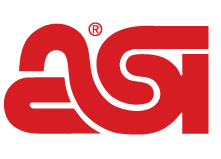News CANADIAN NEWS August 01, 2025
Trump Announces Barrage of Updated ‘Reciprocal’ Tariffs Going Into Effect Aug. 7
The president’s executive order on Thursday unveiled levies that will affect nearly 70 U.S. trading partners, as well as a steeper rate on Canadian goods in place immediately.
Key Takeaways
• President Trump’s executive order introduces higher tariffs starting August 7, with Canada facing an immediate 35% rate and Mexico’s increase delayed by 90 days.
• Countries with which the U.S. has a trade deficit will face tariffs starting at 15%, going up to 41% (e.g., Syria), while those with a surplus remain at 10%.
• Notable new rates for the promo industry include India at 25%, Vietnam and Bangladesh at 20%, Thailand and Indonesia at 19% and Switzerland at 39%. China remains at 55%, pending further negotiations.
President Donald Trump announced that higher tariff rates would go into effect for dozens of countries on Aug. 7 — the latest iteration of the “reciprocal” tariffs meant to counter trade imbalances with foreign countries, the president said in an executive order released Thursday.
A steeper 35% tariff rate on Canadian goods – up from the initially increased rate of 25% – will go into effect immediately on Aug. 1. Higher tariff rates on Mexico have been postponed for another 90 days.
The “universal” tariff rate for imports to the U.S. will remain at 10% (the level announced on April 2), a senior Trump administration official told CNN – but that’s only the case for countries with which the U.S. has a trade surplus, in line with Trump’s vocal support of American manufacturing and his opposition of being dependent on foreign factories.
Fifteen percent is the new baseline for countries where the U.S has a deficit, and the newly announced rates range upward from there to as high as 41% (for Syria). The lower rates in many cases were also allocated to countries that have already reached a trade agreement with the U.S. – including recent deals with the European Union, Japan and South Korea, which resulted in tariffs of 15%. Brazil’s new rates are the highest after an additional 40% rate was imposed on the nation Wednesday, plus a 10% bump from the executive order.
There were no further changes to tariff rates on China – currently at 55% after the most recent round of negotiations in June – but there were changes to the levies on several other nations that promo firms have turned to for alternate sourcing options in recent years.
India has a new tariff rate of 25%; goods from Vietnam and Bangladesh will both be taxed at 20%; Thailand and Indonesia at 19%; and Turkey at 15%, for example.
Many of these rates were lower than those initially threatened when the reciprocal tariffs were first announced and then delayed in early April, but still higher than pre-2025 levels.
The announcement also noted that goods that are transshipped – or shipped from a country with a higher tariff to one with a lower rate and then shipped to America – would be subject to an additional 40% levy.
What’s To Come
Aug. 1 was the initial deadline for trade negotiations given to nations on the list back in April when the massive round of reciprocal tariffs was first announced. The new Aug. 7 implementation date is to account for U.S. Customs and Border Patrol to update the tariff schedule with the new rates, a senior administration official told The Wall Street Journal.
The president’s executive order did anticipate that more deals would be finalized between its July 31 release and the Aug. 7 implementation date. Taiwan, which faces a 20% tariff, and Switzerland, which has one of the highest new rates at 39%, have already said they’re hoping to continue negotiations.
18.2%
The new average United States effective tariff rate, with these new levies in effect. Previously, the average was about 2.3%.
(Yale Budget Lab)
What wasn’t updated in the latest barrage of new levies was the steep 50% import rates on steel and aluminum that went into effect on June 4, and on copper that was set to begin Aug. 1. Those import restrictions are still in place, and are set to have a particular impact on promo, in which drinkware – especially stainless-steel tumblers and water bottles – make up a significant portion of overall industry sales.
The U.S.’ current trade truce with China – which resulted in the lowering of import rates on the country to 55% from their peak of 145% – is scheduled to expire on Aug. 12 after its initial 90-day run. (The 55% rate includes tariffs placed on China during Trump’s first term.) U.S. and Chinese officials agreed July 29 to begin working toward an extension, but as of this publication had not yet come to an agreement.
Also announced this week is that the de minimis exemption – which allows products worth $800 or less to enter the U.S. without import tariffs – is set to expire on Aug. 29. The order applies globally, but it has recently been largely used by e-commerce retailers like Shein or Temu that are based in China or Hong Kong, as well as a variety of promo firms who ship small-value orders directly from Chinese factories to avoid tariffs.
